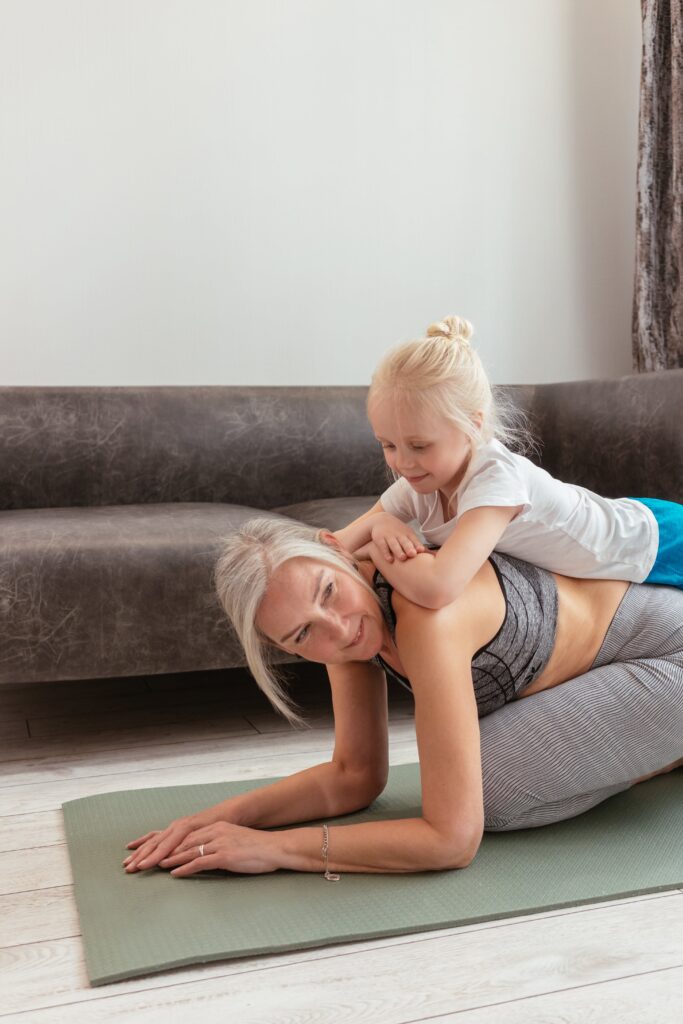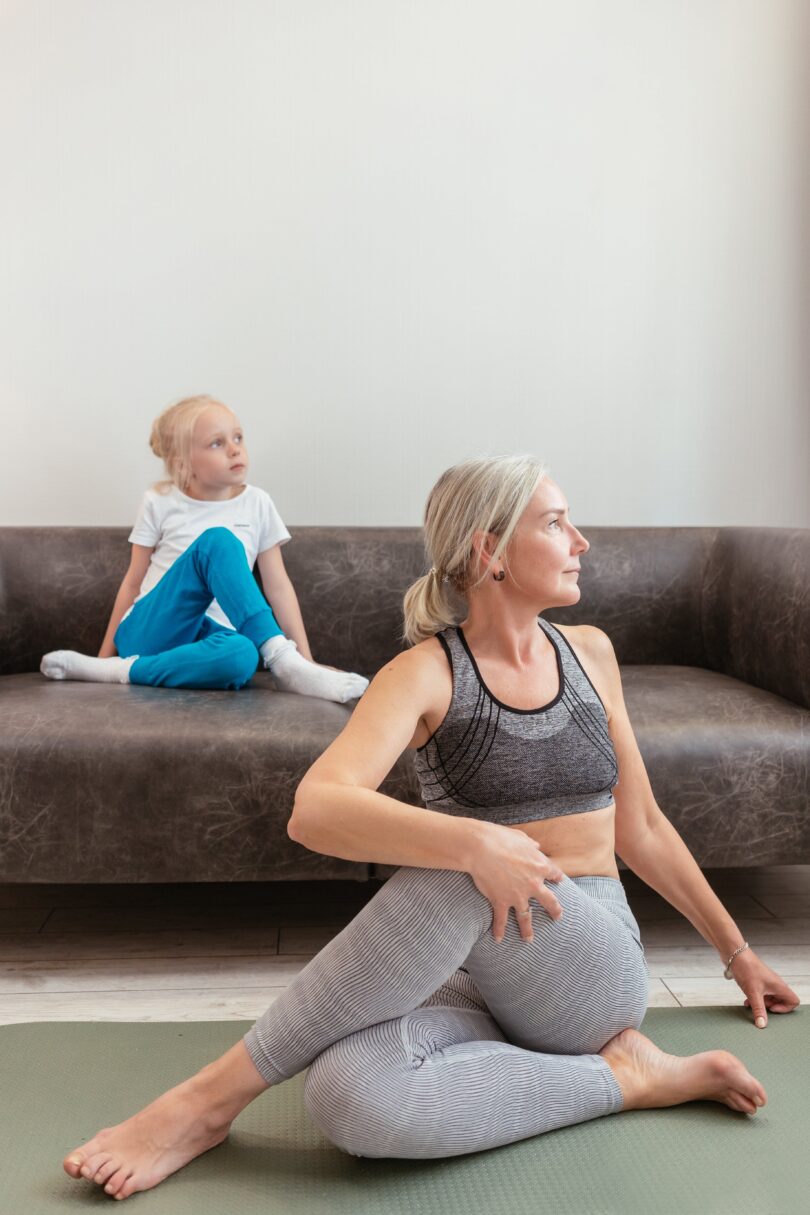Table of Contents
I. Introduction
A. Definition of Chair Yoga
Chair yoga, a gentle form of yoga performed while seated or using a chair for support, is gaining popularity, especially among seniors. It offers a modified approach to traditional yoga, making it accessible to individuals with various physical abilities.
B. Importance of Chair Yoga for Seniors
As we age, maintaining physical and mental well-being becomes crucial. Chair yoga provides an excellent avenue for seniors to engage in a holistic wellness practice that promotes flexibility, strength, and emotional balance.
II. Benefits of Teaching Chair Yoga to Seniors
A. Physical Benefits
Chair yoga contributes to enhanced flexibility, improved posture, and increased circulation. It also aids in reducing joint pain and muscle tension, promoting overall physical health in seniors.
B. Mental and Emotional Benefits
Beyond the physical advantages, chair yoga fosters mental clarity, stress reduction, and emotional well-being. Seniors experience a sense of relaxation and mindfulness, contributing to improved mental health.
III. Getting Started with Chair Yoga
A. Understanding the Basics
For those new to chair yoga, a foundational understanding of basic yoga principles is essential. Instructors should emphasize the importance of breath awareness and gentle movement.
B. Creating a Comfortable Environment
Ensuring a comfortable and safe space is crucial. Instructors must consider the seating arrangement, lighting, and temperature to create a conducive atmosphere for seniors.

IV. Simple Chair Yoga Poses
A. Neck and Shoulder Exercises
Gentle neck rolls and shoulder stretches help seniors release tension in common problem areas, promoting flexibility and relieving stiffness.
B. Gentle Arm and Leg Stretches
Incorporating seated arm and leg stretches enhances joint mobility and flexibility, catering to seniors with varying degrees of physical abilities.
C. Seated Twists and Turns
These poses promote spinal mobility and gently engage the core muscles, contributing to overall stability and balance.
Related Article : Yoga for Seniors and Beginners: Embracing Wellness Through Gentle Practice
V. Overcoming Challenges
A. Addressing Physical Limitations
Instructors should be attentive to participants’ physical limitations, offering modifications and alternatives to accommodate varying abilities.
B. Adapting Poses for Different Abilities
Customizing chair yoga poses ensures inclusivity, allowing seniors with diverse capabilities to participate and experience the benefits of the practice.
VI. Building a Chair Yoga Routine
A. Structuring a Session
Creating a well-balanced chair yoga session involves incorporating warm-up, main poses, and relaxation techniques. This structure enhances the overall experience for seniors.
B. Incorporating Relaxation Techniques
Guided meditation and deep-breathing exercises offer seniors a chance to unwind, fostering mental relaxation and emotional balance.
VII. Tools and Resources for Chair Yoga Instructors
A. Recommended Props
Chairs, cushions, and yoga straps are valuable props that aid in creating a supportive and comfortable environment for seniors.
B. Online Platforms for Guidance
Instructors can leverage online resources, such as tutorials and instructional videos, to enhance their skills and stay updated on chair yoga best practices.
VIII. Success Stories
A. Real-life Examples of Improved Well-being
Sharing success stories from seniors who have benefited from chair yoga creates motivation and encourages participation.
B. Positive Impact on Seniors’ Lives
Highlighting the positive changes in seniors’ lives, both physically and emotionally, emphasizes the transformative power of chair yoga.
IX. Promoting Chair Yoga Classes
A. Local Community Outreach
Engaging with local communities through workshops, seminars, and demonstrations helps raise awareness about chair yoga classes for seniors.
B. Online Marketing Strategies
Utilizing social media platforms and online advertising can attract a broader audience, connecting with seniors who may prefer virtual classes.
X. Common Misconceptions
A. Dispelling Myths about Chair Yoga
Addressing misconceptions, such as chair yoga being only for those with limited mobility, helps break barriers and encourages wider participation.
B. Addressing Concerns and Questions
Open communication channels to address concerns and questions seniors may have about chair yoga, fostering a supportive and encouraging environment.
XI. Professional Development for Instructors
A. Continuing Education Opportunities
Staying updated on the latest research and trends in senior health and wellness ensures that chair yoga instructors provide high-quality, relevant instruction.
B. Staying Informed about Senior Health
Understanding the unique health challenges faced by seniors allows instructors to tailor chair yoga sessions to address specific needs.
XII. Testimonials from Seniors
A. Firsthand Experiences with Chair Yoga
Seniors sharing their personal experiences with chair yoga offer authentic testimonials that resonate with potential participants.
B. Insights into Personal Transformations
Highlighting how chair yoga has positively impacted seniors’ lives, both physically and emotionally, provides valuable insights for prospective participants.
XIII. Trends in Chair Yoga
A. Growing Popularity
The increasing recognition of chair yoga as an effective and accessible wellness practice signifies a growing trend in senior fitness.
B. Innovations in Senior Fitness
Ongoing developments in chair yoga techniques and approaches demonstrate the continuous evolution of this specialized form of fitness for seniors.
XIV. Future Outlook
A. Anticipated Developments in Chair Yoga
As more research emerges and awareness grows, chair yoga is likely to become a mainstream practice in senior wellness programs.
B. Potential Impact on Senior Wellness Programs
The integration of chair yoga into broader senior wellness programs could lead to comprehensive approaches that address both physical and mental well-being.
FAQs
Is chair yoga suitable for seniors with limited mobility?
Chair yoga is specifically designed to cater to individuals with varying levels of mobility, making it an inclusive practice suitable for seniors with limited mobility.
Can chair yoga help alleviate joint pain in seniors?
Yes, chair yoga incorporates gentle movements that can help alleviate joint pain by promoting flexibility and improving circulation.
How often should seniors participate in chair yoga sessions?
The frequency of chair yoga sessions can vary, but engaging in sessions 2-3 times per week can yield noticeable physical and mental benefits.
Are there age restrictions for practicing chair yoga?
Chair yoga is generally suitable for individuals of all ages, with a focus on seniors. It is adaptable to different fitness levels and can be modified to accommodate individual needs.
Can I learn chair yoga online?
Yes, there are numerous online resources, including video tutorials and classes, that provide guidance on chair yoga for seniors.
Conclusion
A. Recap of the Benefits
Teaching chair yoga to seniors offers a myriad of benefits, encompassing physical, mental, and emotional well-being. It provides a holistic approach to senior fitness, promoting health and vitality.
B. Encouragement to Explore Chair Yoga
Encouraging seniors to explore chair yoga as a gentle and effective wellness practice fosters a sense of empowerment and self-care.
Related Article : Yoga Classes for Older Adults: A Journey to Holistic Well-being







